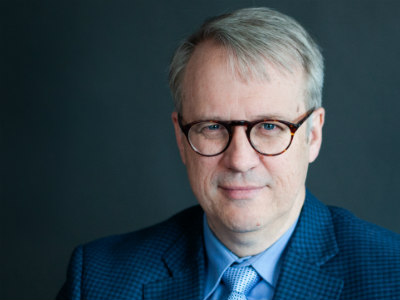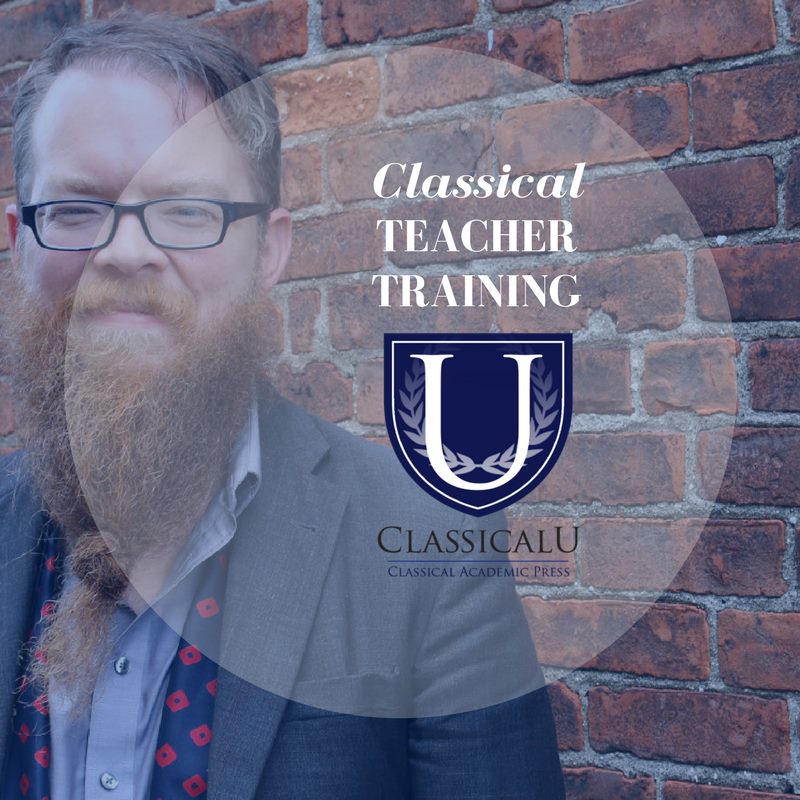by Christopher Perrin, PhD | Nov 1, 2011 | Articles
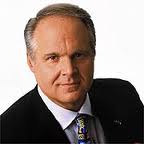
Today (11/1/2011) on his radio program, Rush Limbaugh responded to a woman with a classical studies degree who was complaining (via a sign at a protest) that she could not get a job. This led Limbaugh to suggest that perhaps she should not have taken a classical studies degree in the first place, wondering aloud why someone at her college didn’t tell her it was a worthless degree. He then debunked the notion (apparently believed by too many college students) that a college degree of any sort guarantees a high-paying job.
Well. As you might guess, I think studying classical literature and language can be an excellent choice–but not necessarily because it automatically (in quid pro quo fashion) results in a high-paying job. In fact, what is lost in the whole debate is the question about what an education is ultimately for. Is it for getting a good job? Is for preparing us to be efficient workers in the American democracy? Is it for enabling us to make a good deal of money? Or is it primarily for shaping and cultivating our humanity? Some have put the question this way: Is education primarily about making a living or learning how to live?
We Americans are quite pragmatic, and I admit that even as a classical educator and publisher I think a good deal about what practically should happen. But the traditional, classical approach to education which has emphasized the cultivation of a human soul, nourished by the study of truth, goodness and beauty (not too American, eh?) has actually produced extremely practical, capable people. We need only cite the likes of Thomas Jefferson, James Madison and John Adams to make our case. These men could not have helped produce the American Republic had they not been steeped in “classical studies” and yes, even Latin. When we read the Federalist Papers we find regular references to the history and governments of Greece and Rome and classical authors cited in Latin, without translation. These men had cultivated souls. They were classically educated. They were eminently practical.
Today a classical education may not result in a quick hire as a web developer, project manager or accountant. But study the people who have had a good classical education. You will find them leading and serving others. By analogy, study those who have studied English. Yes, you will find some of them waiting on tables (along with some business majors), but you will also find that among fortune 500 companies it is not business but English which is the more common major among company CEOs. It just may be the case that studying literature, language and humanity may just be a terrific preparation for creatively and wisely serving and leading…other humans.
Can we cite a few classically-educated humans? Joe Paterno (who patterned the Nittany Lions after Sparta), J.K. Rowling (now I understand Voldemort and all those spells), J.R.R. Tolkien (who created his own language and world) and Ted Turner (who blew out cable TV). The classically-educated serve well, and have for about a thousand years. Perhaps the most famous CEO of all time (Steve Jobs) repeatedly said that he sought to make Apple the intersection of the liberal arts and technology. Anyone who has used an iPhone, iPad or Mac knows that Apple has wed beauty to technology–and made the use of sophisticated technology in some surprising ways, humanizing. If you love your iPhone, in some measure you can thank the liberal arts.
For your reference: Dana Gioia, the former director of the National Endowment of the Arts, wrote and influential essay called “Can Poetry Matter?” as well as “Business and Poetry.” Both essays make a strong case for liberal studies and practical affairs. See www.danagioia.net. See also this article published by USA Today which suggests that an MBA is not always the best route to business leadership–in the opinion of leading CEOs. See Liberal Arts and College.
Download a free copy of An Introduction to Classical Education (by Christopher Perrin) here.
by Christopher Perrin, PhD | Nov 1, 2011 | Articles
What is Classical Education?
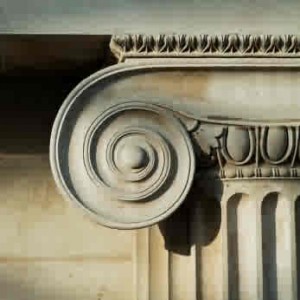
Christopher A. Perrin, M.Div, Ph.D.
Most of us have a difficult time defining the word education—it has a wide range of meaning and is used in different ways in different contexts. Certainly education can be formal (as in a college education) or informal (his stern aunt provided him a fresh education in manners).
The word classical is no easier to define. It can refer to a certain kind of music (that came well after the Greeks and Romans) and a certain kind of literature (the “classics” of western civilization). It can refer to a historical period (The Greeks and the Romans) and architecture (style, concepts and motifs from Greece and Rome). Of course it can also refer to Greek and Latin when used in the phrase classical languages.
But classical can also refer to anything that has become standard and authoritative (in a given field) as opposed to novel and experimental. Thus we can speak of classical physics and even classical book-making, bread-making or beer brewing. And of course, classical education.
Given the wide semantic range of both classical and education it is not surprising that the phrase “classical education” is also used with various meanings. Language is flexible, and so we have some varied and flexible uses of “classical education.” This means that there can be several legitimate uses of the phrase—but it would be wise to know just what a given speaker means by classical education. Here are several ways the phrase is used:
- classical education: a study of the Greek and Latin languages (linguistic definition)
- classical education: a study of the Greek and Latin languages and the history, literature, art, philosophy and culture of Greek and Roman civilization (linguistic and cultural definition)
- classical education: a study of the great ideas of western civilization as contained in the classic “great books” produced by that civilization; a study of the “best that has been thought or said.” (intellectual history definition)
- classical education: a study of the seven liberal arts of grammar, logic, rhetoric (the trivium) and arithmetic, geometry, music and astronomy (the quadrivium). (curricular definition)
- classical education: a study of the seven liberal arts employing traditional teaching insights and methods (such as singing, chanting, Socratic discussion and debate) passed down to us by past educators. (pedagogical definition)
- classical education: the cultivation of wisdom and virtue by nourishing the soul on truth, goodness and beauty by means of the seven liberal arts (soul-ish or psychological definition)
- classical education: an approach to education that seeks to create a community of learning, characterized by academic rigor, warmth and delight and involving vibrant interaction of teachers, parents, friends and others. (communal definition)
Now, all these definitions reflect current use. This is because classical education, as a rich, complex 2500 year-old tradition, does contain many important elements (linguistic, cultural, intellectual, curricular, pedagogical, psychological and communal elements). Because classical education is so rich and complex, it is hard to sum it up in one or two sentences. Here is a crack at it—this time including a theological element:
classical (and Christian) education: a traditional approach to education that blends Christian theology with the historic curriculum and pedagogy of the seven liberal arts in order to produce societal leaders characterized by wisdom, virtue and eloquence.
This may be a decent “dictionary definition,” but like so many brief definitions of complex topics, it is so general that it lacks clarity and punch. What after, all is Christian theology, pedagogy and the seven liberal arts? And if we listed the liberal arts, how many of us would like to know more about grammar, logic or rhetoric as an art? How many of us have a clear sense of what virtue and eloquence mean? But alas, when we abbreviate we must leave things out. So where do we go from here? To the same place we go after putting down the dictionary—to an article, encyclopedia, pamphlet or book; another level down.
Going another level down, we would discover that classical education has also traditionally emphasized:
- The training of leaders: those governing and leading culture were educated classically while others were trained for particular jobs and tasks
- Reflection and leisure: time for discussion, thought and application was a necessary part of acquiring wisdom, capacity and skill
- A common curriculum: students all study the essential curriculum of the seven liberal arts which were thought to prepare students for any profession or field of endeavor
- Interaction with tradition: the knowledge, wisdom and art of the past were honored and studied for present use
- Innovation according to need: classical education adapted to new geography, circumstances, discoveries and continued with “theme and variation”
- Partnership with the church: education was informed and guided by church liturgy, teaching, training and financial support
- Training affections and the intellectual virtues: educators sought to shape and form the student and not merely inform him. Students were taught to “love that which is lovely” and acquire the virtues necessary to be eager and excellent seekers of truth.
You can see how easily we could now write an article, pamphlet or book! Each of the items above deserves to be further expanded and explored.
With homeschooling parents talking increasingly about the classical approach to education, it will do everyone good to become familiar with the basic contours or essential elements of traditional, classical education. We should avoid facile, “straw man” constructions of classical education that are easy to dismiss as much as we should avoid glowing and sentimental descriptions that present it as a cure-all. By becoming more familiar with this rich tradition in education, we will better communicate and better make use of its riches.
Resources for further study:
For those beginning a study of classical education and ready for the next another level of exploration, I recommend the following:
An Introduction to Classical Education: A Guide for Parents (45 page pamphlet available in paper back but also available as a free download at Classical Academic Press.com)
Classical Education: The Movement Sweeping America (Gene Edward Veith and Andrew Kern, published by the Capital Research Center)
by Christopher Perrin, PhD | Sep 16, 2011 | Videos
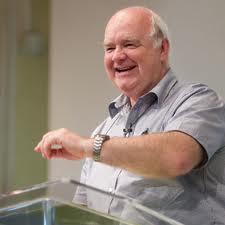 This past June, Dr. John Lennox (the renowned mathematician and philosopher of science from Oxford University) addressed a group of classical administrators and educators at a retreat sponsored by the Institute for Classical Schools. One of his seminars was a presentation on the Book of Daniel and Pluralism. The presentation was part seminar, part sermon, part lecture but was on the whole remarkable. The entire seminar is posted here (below) in three parts. I highly recommend it to all classical educators and administrators–it can serve as a great resource for teacher training and development.
This past June, Dr. John Lennox (the renowned mathematician and philosopher of science from Oxford University) addressed a group of classical administrators and educators at a retreat sponsored by the Institute for Classical Schools. One of his seminars was a presentation on the Book of Daniel and Pluralism. The presentation was part seminar, part sermon, part lecture but was on the whole remarkable. The entire seminar is posted here (below) in three parts. I highly recommend it to all classical educators and administrators–it can serve as a great resource for teacher training and development.
For your information, here is a brief biography of Dr. Lennox:
John Lennox is Professor of Mathematics in the University of Oxford, Fellow in Mathematics and the Philosophy of Science, and Pastoral Advisor at Green Templeton College, Oxford. He is also an adjunct Lecturer at Wycliffe Hall, Oxford University and at the Oxford Centre for Christian Apologetics and is a Senior Fellow of the Trinity Forum. In addition, he teaches for the Oxford Strategic Leadership Programme at the Executive Education Centre, Said Business School, Oxford University. For more information about John Lennox see his website here.
The Witness of Daniel and Pluralism in Three Parts by Dr. John Lennox
Part One
Part Two
Part Three
by Christopher Perrin, PhD | Aug 17, 2011 | Audio, Music, Uncategorized
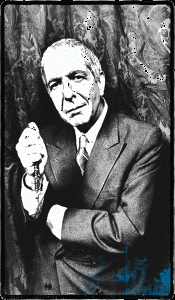 Leonard Cohen has been writing songs for over forty years. He is universally recognized as one of the great song writers of our time, having explored a variety of genres with an almost facile genius. Raised in a Messianic Jewish home, he has always explored religious themes and much of his music reflects his immersion in and reflection on the Old Testament. Despite becoming a Buddhist Zen monk for five years, Cohen remains an observant Jew.
Leonard Cohen has been writing songs for over forty years. He is universally recognized as one of the great song writers of our time, having explored a variety of genres with an almost facile genius. Raised in a Messianic Jewish home, he has always explored religious themes and much of his music reflects his immersion in and reflection on the Old Testament. Despite becoming a Buddhist Zen monk for five years, Cohen remains an observant Jew.
Not only is Cohen a song writer and singer, he is also a published poet and novelist. I have always thought that song writers should study poetry (poetry really is song) and that the great song writers were in fact poets. Could Cohen be Cohen without his study and practice of poetry?
As just one example of Cohen’s gift, I cite his song Hallelujah, written in 1984 and recorded by over 50 artists. The song is marriage between lyric and melody, with each serving the other. The lyrics evoke several Old Testament themes, sometimes merging them (David, Bathsheba, Samson, Delilah all appear) while bringing them into the present by means of direct address. There is a “you” in this poem that makes us all in someway share in the tragedies and triumphs of David, Bathsheba, Samson and Delilah. Especially moving is the last line of the second stanza: “And from your lips she drew the Hallelujah.” It seems that Bathsheba and Delilah–both abused and tragic women– still receive the blessing, the Hallelujah, that while cold and broken, is passed on from generation to generation, a promise given in the midst of so much human suffering. “Though he slay me, yet will I trust him,” Job said.
As I listen to “Hallelujah” I find myself present along with these forebears–they become like brothers and sisters to me. I also become the “you,” the person addressed, and the singer, who cries “Hallelujah,” Hebrew for “praise Yahweh.” How can all this be at once? Only because Cohen is a great poet.
I think that Cohen and his poetry and music will make for a interesting unity study in classical schools. He presents much to discuss, debate and enjoy.
Well if 50 artists have recorded “Hallelujah,” why not one more?. Here is my version, done, as it were, by compulsion. See the full text of the song below.
Hallelujah by Leonard Cohen sung by Christopher Perrin
Hallelujah
Leonard Cohen
I heard there was a secret chord
That David played and it pleased the Lord
But you don’t really care for music do ya
It goes like this the fourth the fifth
the minor fall and the major lift
The baffled king composing hallelujah
Hallelujah, Hallelujah, Hallelujah, Hallelujah
Your faith was strong but you needed proof
You saw her bathing on the roof
She tied you to a kitchen chair
She broke your throne, and she cut your hair
And from your lips she drew the Hallelujah
Hallelujah, Hallelujah, Hallelujah, Hallelujah
Maybe I’ve been here before
I know this room I’ve walked this floor
I used to live alone before I knew you
I’ve seen your flag on the marble arch
Love is not a victory march
It’s a cold and it’s a broken hallelujah
Hallelujah, Hallelujah, Hallelujah, Hallelujah
There was a time you let me know
What’s real and going on below
But now you never show it to me do you?
I remember when I moved in you
The holy dark was moving too
And every breath we drew was hallelujah
Hallelujah, Hallelujah, Hallelujah, Hallelujah
Maybe there’s a better bow
Then all I ever learned from love
Was how to shoot at someone while I drew you
Its not a cry you can hear at night
Its not somebody who’s seen the light
It’s a cold and it’s a broken hallelujah
Hallelujah, Hallelujah, Hallelujah, Hallelujah
You say I took the name in vain
I don’t even know the name
But if I did, well really, what’s it to ya?
There’s a blaze of light in every word
It doesn’t matter which you heard
The holy or the broken Hallelujah
Hallelujah, Hallelujah, Hallelujah, Hallelujah
I did my best, it wasn’t much
I couldn’t feel, so I tried to touch
I’ve told the truth, I didn’t come to fool ya
And even though it all went wrong
I’ll stand before the Lord of Song
With nothing on my tongue but Hallelujah
Hallelujah, Hallelujah, Hallelujah, Hallelujah
Hallelujah, Hallelujah, Hallelujah, Hallelujah
by Christopher Perrin, PhD | Aug 5, 2011 | Articles, Book Reviews
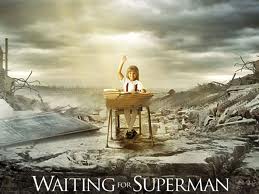
Waiting for Superman (Paramount Pictures)
Christopher A. Perrin
It is hard to watch David Guggenheim’s documentary Waiting for Superman without leaning into the screen with anticipation and hope, only to droop with disappointment, yes even despair. It is the kids that do that to you—real children with real dreams, bright and earnest, brimming with surprising potential, supportive parents or grandparents, hoping and praying they can be one of the few selected (by lottery) to attend a promising charter school. They don’t get in (with two exceptions).
Daisy is a Hispanic elementary student from a challenging section of Los Angeles (East LA). The camera follows her for most of a year, recording her at school and home diligently studying, talking excitedly about her dreams to be come a veterinarian. After watching her for a few months, you have no doubt she could become veterinarian (or just about anything else.). Her extended family pulses with her potential, believes in her, as you do. If she stays in her public school system, her chances of going to college are virtually nil. A local charter school offers hope—the camera reveals the charter school is doing excellent work and could keep her on her dream’s path. After getting to know Daisy and her family, you watch her sitting in the public lottery, fingers crossed, with hundreds of other students all vying and praying for one of the few spots at the school. She doesn’t get in. She will have to attend her local middle school, which has a 40% graduation rate (from eighth grade). And so it goes with several other hopeful students followed by Guggenheim’s camera.

The film gives the impression that Guggenheim is no natural critic of public, government education and that perhaps he would have liked to put his own children in a public school in Los Angeles. Diane Ravitch (in her critical review of the film: http://www.nybooks.com/articles/archives/2010/nov/11/myth-charter-schools/?page=1) points out that Guggenheim himself attended Sidwell Friends, an elite preparatory school in Washington, D.C. (Obama’s children attend Sidwell). Whatever his predispositions toward public education, when his children became of school age he simply could not seriously consider enrolling his children in the local public school. For him, the raw data was persuasive: too many students were getting lost in the school system, unable to realize their academic potential, far too few even graduating from high school (in some cases below 20%). What was going wrong inside these schools? He set out to find out and produced Waiting for Superman (he also produced An Inconvenient Truth, about global warming) and enrolled his children in a private school—because he could afford to.
What goes wrong in these schools is nothing new to anyone even generally familiar with urban, public education. Bad teachers can’t easily be removed. Even with significant funding, good books and supplies are scarce (and often poorly treated or destroyed by students). Students disrespect teachers and teachers endure students. Resolute administrators become disillusioned and give up, or become opposed (by powerful teacher unions) and forced out. Schools lack a culture of study, rigor, discipline or optimism and instead become soul-squelching institutions dominated by popular youth culture and the culture of the street. All this is nothing new. What is new is what the eye of the camera reveals. We don’t just hear it, we see it, and we see the Daisys of the world being lost.
We also see some remarkable people working for change. Michelle Rhee (former superintendent of Washington, D.C. schools tell us of her experience trying to reform one of the worst-performing school districts in the nation. She worked valiantly, was opposed venomously, then removed when a new mayor was elected (campaigning that he would remove her if elected). Rhee concludes that the biggest obstacles to reforming the D.C. district is not money or curriculum but the teachers themselves (not all, perhaps not most, but enough) who are more concerned with their job security (tenure) than students and their welfare.
Another administrator with Kipp charter schools (http://www.kippny.org/) is doing noble work providing a superb education to minority students in Harlem. Kipp seems to prove that poverty does not keep students from an excellent education—bad schools do. The Kipp charter school in Harlem has a 96% graduation rate. Guggenheim notes that he used to believe that bad (poor) neighborhoods made for bad schools. Now he believes bad schools cause bad neighborhoods.
Who is waiting for Superman? The children are, and it appears he is not coming. These students need rescue—rescue from their failing, dis-affecting, de-humanizing schools. If there are any heroes in the film it is the courageous administrators and teachers of several charter schools that have been started and succeeded (almost against all odds) right amidst a ring of failing schools. Clearly, Guggenheim thinks we must offer students like Daisy something different and better, like innovative charter schools. After watching the film it is hard to disagree.
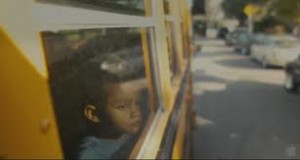
However, even great charter schools lack something vital—the freedom to engage the culture of the Christian west and her queen, theology. We must settle for a secular rigor and an eclectic and unstable curriculum. Put another way, we must settle for getting urban kids to suburban standards. Still secular, still likely encumbered with all the challenges of our better suburban public schools, but still better.
As well, we must ask ourselves if Guggenheim is telling all the critical parts of the story. He admits that only one in five (20%) charter schools are succeeding. He does not show any examples of successful public schools in urban settings. He chooses not to tell us the remarkable amount of money that is spent at some of these charter schools (in his film) that receive public and private funding. The organization that runs the Kipp schools, for example, has over $200 million in assets and provides students with an extensive array of social and medical services. The boarding school featured in Washington, D.C., spends $35,000 per year on each student. In other words, the charter schools that Guggenheim features are funded well beyond typical public (and private!) schools. With this kind of funding, can we really regard such students as impoverished? Diane Ravitch (a prominent historian of education) points to studies that show that only 17% of charter schools are out-performing comparable public schools, that 37% are performing worse than public schools and that 46% are performing the same as public schools.
Ravitch thinks that Guggenheim is engaging in artistic propaganda and special pleading, even while highlighting urgent problems and some remarkable successes. For Ravitch, poverty is a chief causal factor contributing to student performance and thus school achievement. What she doesn’t make explicit (but seems to assume) is that urban families are in crisis and in fact disappearing as in-tact supportive communities. Without a supportive family, a student can rarely succeed in a public, charter, private or classical Christian school. Now there is a relationship between poverty and family cohesiveness, but being poor (as hard as that is) does not cause the disintegration of a family. Poverty is not, per se, a sin nor does it cause sin, though it brings its peculiar temptations even as wealth does.
Something beyond mere poverty is at play, destroying American families, not only in the cities but in the suburbs. Urban families, however, are clearly in greater crisis and no doubt poverty is exacerbating the family breakdown. Leaving aside, for the moment, the complex nexus of factors making war on the American family, we should remember that schools can teach but not single-handedly resuscitate a family dying from a hundred wounds. Not even great classical Christian schools. Schools cannot effectively serves as social welfare agencies, health care providers, churches, or surrogate mothers and fathers. As Jacques Barzun pointed out long ago (in Teacher in America), schools can teach but not educate, for to “educate” requires a congenial collaboration among parents, families, friends, supporters, churches, teachers, administrators and students. Ravitch notes that all the families in Waiting for Superman are supportive and invested in the education of their children (special pleading again). The reality is that far too many families are broken and unable to support and encourage their children generally, much less follow and support their education. Guggenhiem seems to think that a local charter schools can change all this. He thinks, in fact, that it is failing schools that make for failing neighborhoods—as if the local school has done the most to cause the breakdown of urban culture and families.

Causation (as philosophers and scientists will tell us) is tricky and hard to pin down. Our urban culture is suffering on account of multiple causes in my view, not the least of which is the ubiquitous, invasive influence of secular mass media that is shaping the souls of our American youth in and out of the cities. James K. A. Smith has pointed out the various ways “secular liturgies” from the mall to the athletic field to the movies to Facebook are powerfully forming our youth to love a secular ideal of human flourishing much different that the New Testament ideal of the Kingdom of God (Desiring the Kingdom: Worship, Worldview and Cultural Formation). Which leads me to say that without the revival of city churches urban schools (of any stripe) will have a greatly diminished impact. A great urban school cannot do all that is needed. In fact an urban school can only become great when urban churches support it and compliment it with their own vibrant ministries to families. Christian educators cannot flee to schools as the best means of reviving our urban youth and families. Rather churches, schools and families must form vital partnerships if there is any hope of creating culture and cultivating students not just as future workers but human souls.
Private Christian educators should take note of Guggenheim’s film, but view it critically. He does engage in special pleading, generalizing and one two many straw men. He does not assess the vital role of supportive families or churches in providing education and supporting local schools. His use of statistics has been questioned (effectively by Ravitch). He does, however, powerfully portray the sad state of many urban public schools and the plight of many urban youth, who at present have no choice but to attend a school that will fail them as it has others. By providing a few shining examples of remarkably successful charter schools (even if very well-funded), he suggests it could happen again and elsewhere.
Christians should not wait for public funding or a public charter to offer hope to Daisy and thousands like her. While it will take immense sacrifice of time and resources, it is now time for the accrued wisdom and experience of the last 30 years of renewing classical and Christian education to be brought to bear to start schools in all the major cities in the U.S. This is already beginning to happen, but needs to extend and expand. The Oaks Academy (http://www.theoaksacademy.org/) in Indianapolis, IN is providing a superb liberal arts education to students in that city. Logos Academy of York, PA (http://www.logosyork.org/) is doing the same there. Mortimer Adler quipped that best education for some (meaning a robust liberal arts education) is the best for all. Some of us have been able to afford to give a recuperated, if imperfect classical education to our own children. Are we now ready to give it to others who otherwise will never receive it? They are wanting and waiting









